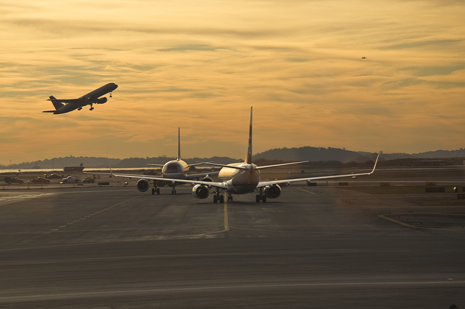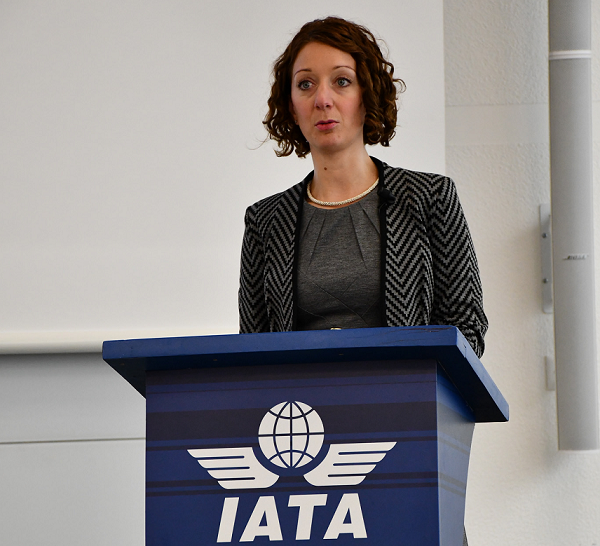
What are the benefits of the existing slot rules, and what issues around potential reform? An interview with Lara Maughan, Head of Worldwide Airport Slots at IATA.

We’ve seen the huge benefit of the Slot rules in terms of preserving international schedules and connectivity. Thanks to the slot relief that was granted during COVID, airlines were able to preserve large amounts of their slot holdings and then restore those services quickly as demand improved.
In Europe we can see that traffic and connectivity is rebounding strongly, along with competition on routes within, to and from Europe. We’ve seen some announcements of strong aircraft orders, especially from some low-cost carriers, which indicates they are confident of consumer demand to fly, and that they will have airport space to operate from!
The main challenge we had last year was the full airport capacity (slots) was allocated but some of them proved unable to meet this level of operation. We also had a sharp increase in ATC delays as the network was equally unready to provide service at normal levels. This has an impact on slots and can be difficult for airlines because sometimes they are not given reasonable flexibility for these issues, even though they are not the airlines’ fault. So, if there is an area where the slot system could be improved, it would be in the first stage in the slot process: airport capacity declaration to match demand. There’s a huge variation in efficiency between airports of basically similar size, and there is inconsistency in how airports actually deliver on the capacity they have promised. Some airports are great at reviewing the developing schedules each season so they can best match demand. Other airports have become a bit lazy and sit on the same slot capacity season after season.
Yes, over the past few months there has been discussion about the future of the EU Slot Regulation. It celebrates its 30th anniversary this year and we can see it has been very successful. The traffic, efficiency, and competition in European aviation have all increased over this period and the Slot Regulation is a bit of a silent hero in that story. Recently we’ve seen a lot of interest in ‘reforming’ slot rules, without tangible evidence of a problem or failure. This interest in the slots system has in some part come from the spotlight the rules were under during COVID, but recently our colleagues at ACI Europe were particularly vocal with some concerns over the slot system, without really offering any detail to explain their claims.
What’s certain is that the airlines – those whose networks could be destroyed - have great evidence not only of the success of the current regulation, but also why some of the changes that have been suggested will actually create the opposite of what “reformers” want to see.
Competition is a good example. There are some who argue that the slot system has prevented new airlines from building slots at congested airports. But it is simply not the case. In Europe in the last 10 years, the share of routes with three or more carriers has increased by 25%. EasyJet has gone from a start-up to owning probably the largest slot portfolio in Europe with a strategy of operating at primary airports. If, instead of the ‘grandfather’ system, which allows airlines that successfully operate slots to retain them, an auction system was introduced for slots, then it would most likely entrench even greater slot control for the airlines with the deepest pockets – as well as pushing up the price of air travel for everyone. And easyJet as a startup would never have grown to the competitive size it is today.
Making best use of limited airport capacity is another example. The utilization of slots at the most congested airports is now up to 95-98%, for all practical purposes these airports are at their maximum. If, for example, the 80-20 rule - which means airlines with slots must operate at least 80% of them to retain the right to operate them the next year – were changed, would that lead to greater utilization than 98%? In practice, that would be highly unlikely to unlock any extra capacity at peak times, but it would reduce the flexibility for airlines to consolidate schedules at times when demand is lower.
We don’t really know! We’re going to carry on making a positive case for the existing Slot Regulation because the evidence all points to it doing exactly what it was designed to do – allow airlines to plan in advance and avoid chaos at extremely busy airports. It is a great example of a Regulation that has been, and continues, to work really well. A few tweaks to the airport capacity declaration would help, and if it were aligned even closer to the Worldwide Airport Slot Guidelines that would also be a good step. But in general, our view would be “if it ain’t broke, don’t fix it”. The consequences of getting this finely tuned system wrong are really immense considering 75% of flights and seats in Europe are using their Level 3 airports!
Further information: